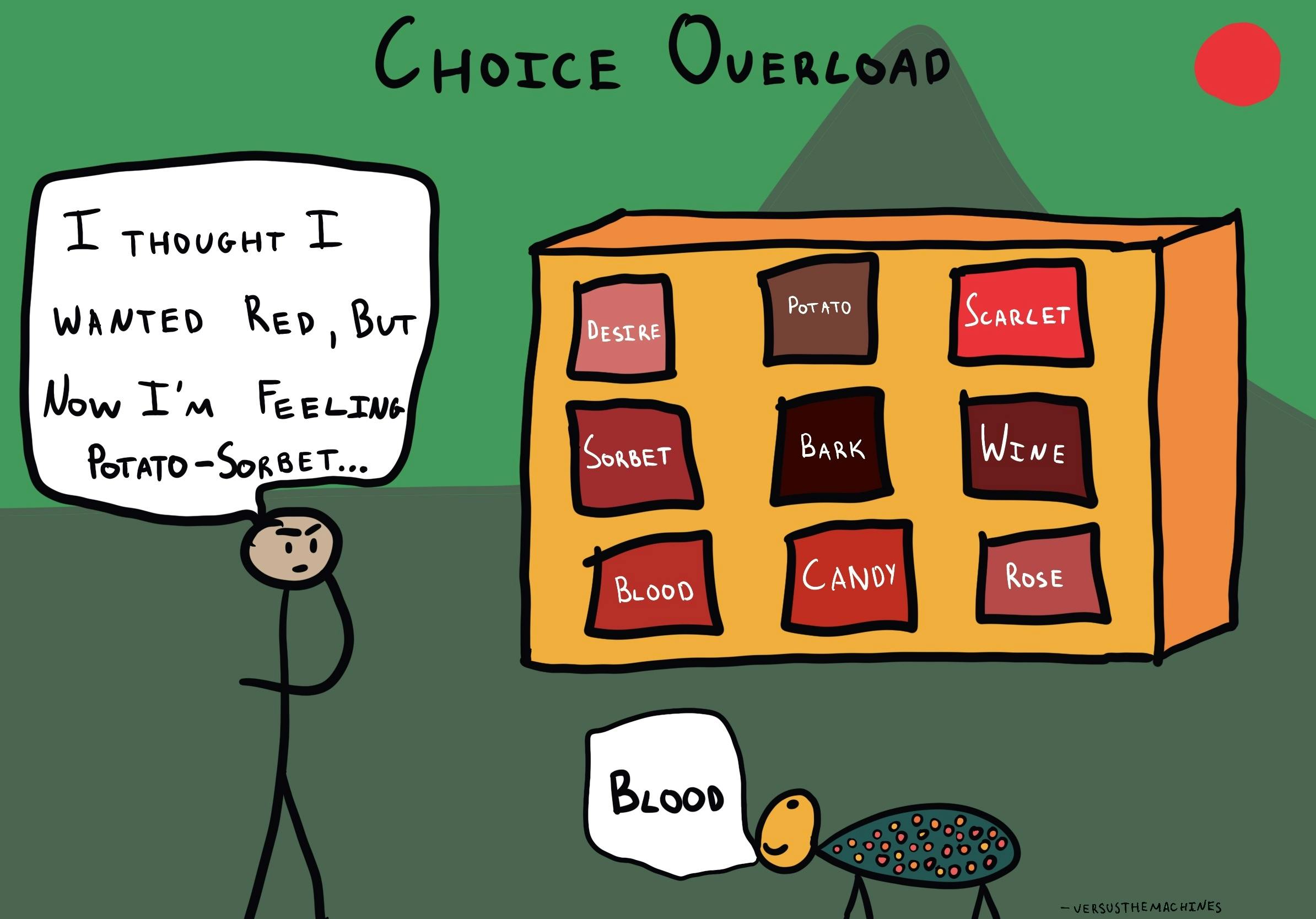Why do we have a harder time choosing when we have more options?
Choice Overload
, explained.What is Choice Overload?
Choice overload, also known as overchoice, choice paralysis, or the paradox of choice, describes how people get overwhelmed when they are presented with many options. While we tend to assume that more choice is a good thing, research has shown that, in many cases, we have a harder time choosing from a larger array of options.

Where this bias occurs
Imagine it’s a hot day out, and you decide to pop into an unfamiliar coffee shop. As you get in line and look at the menu boards, you’re bombarded with a whole slew of options. Should you get a simple iced coffee or a Frappe? What flavor? But wait, the Frappes are so expensive—you should just go for a tea. But that has less caffeine and will give you less energy! What to do? By the time you reach the front of the line, your head is spinning so much that you just grab a bottle of water.
You walked into the coffee shop excited about treating yourself to a refreshing drink, but you walked out disappointed in your selection. What happened? What makes us panic when we encounter overwhelming choices on a menu board? While freedom of choice is critical to our sense of autonomy and well-being, having too many options can be incredibly overwhelming—and can actually make us feel less in control. This phenomenon is called choice overload. To reduce the anxiety that comes from having too many options, we often settle for the default choice (like a plain old bottle of water) or end up making no decision at all. Either way, we’re left frustrated, dissatisfied, and regretful. From influencing our purchase decisions to derailing our dating habits, let’s unpack how choice overload shapes our lives.














